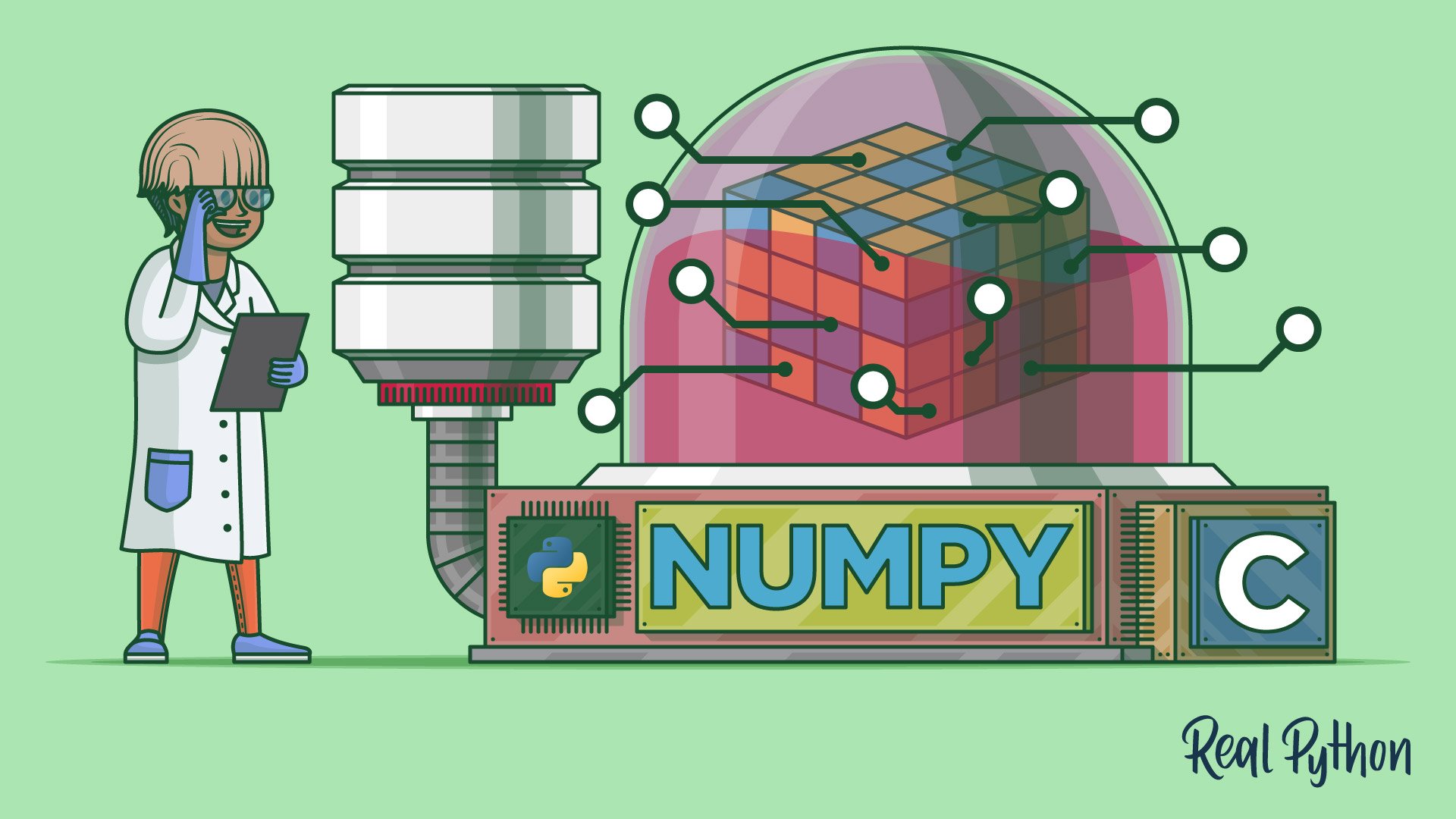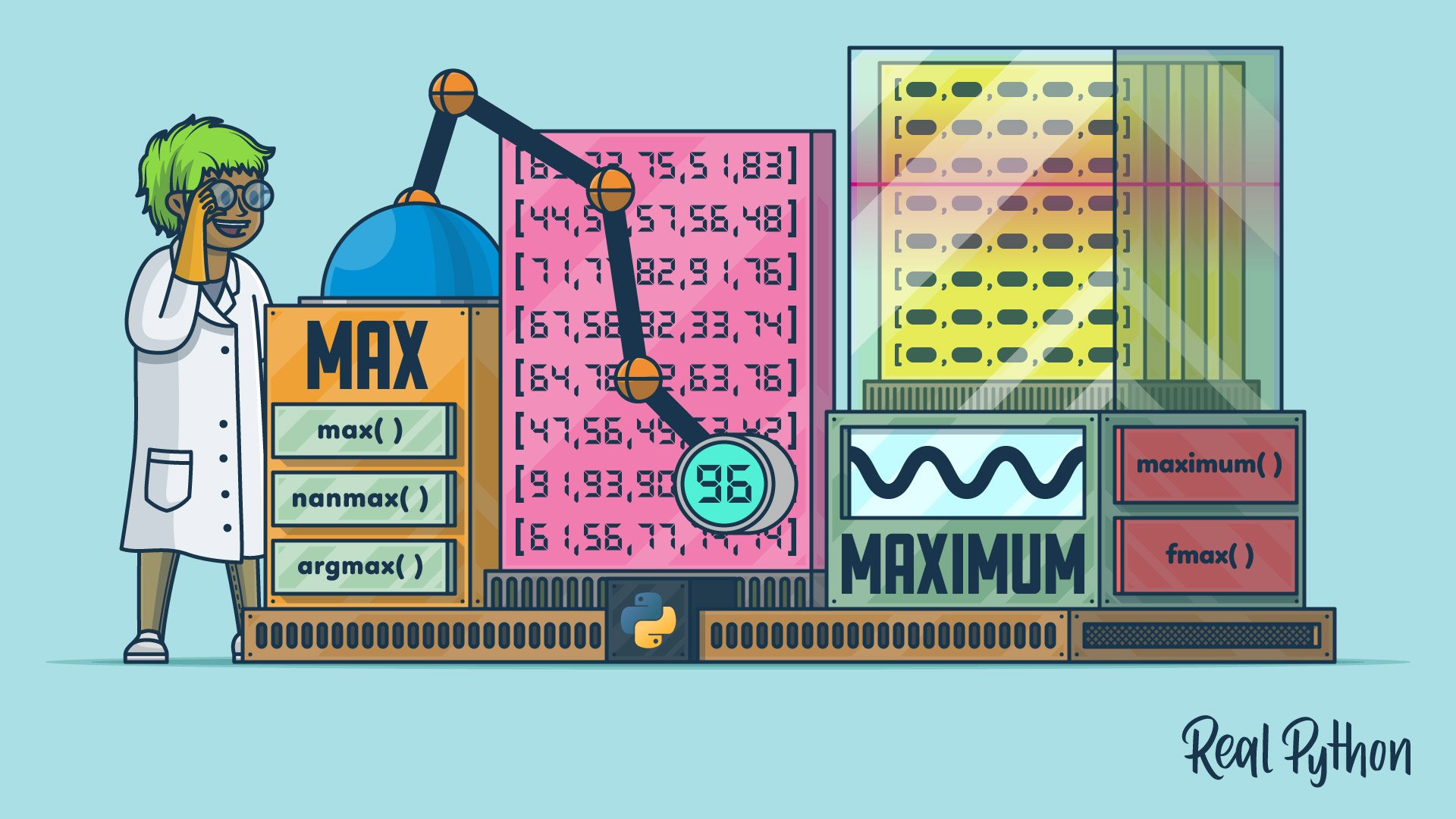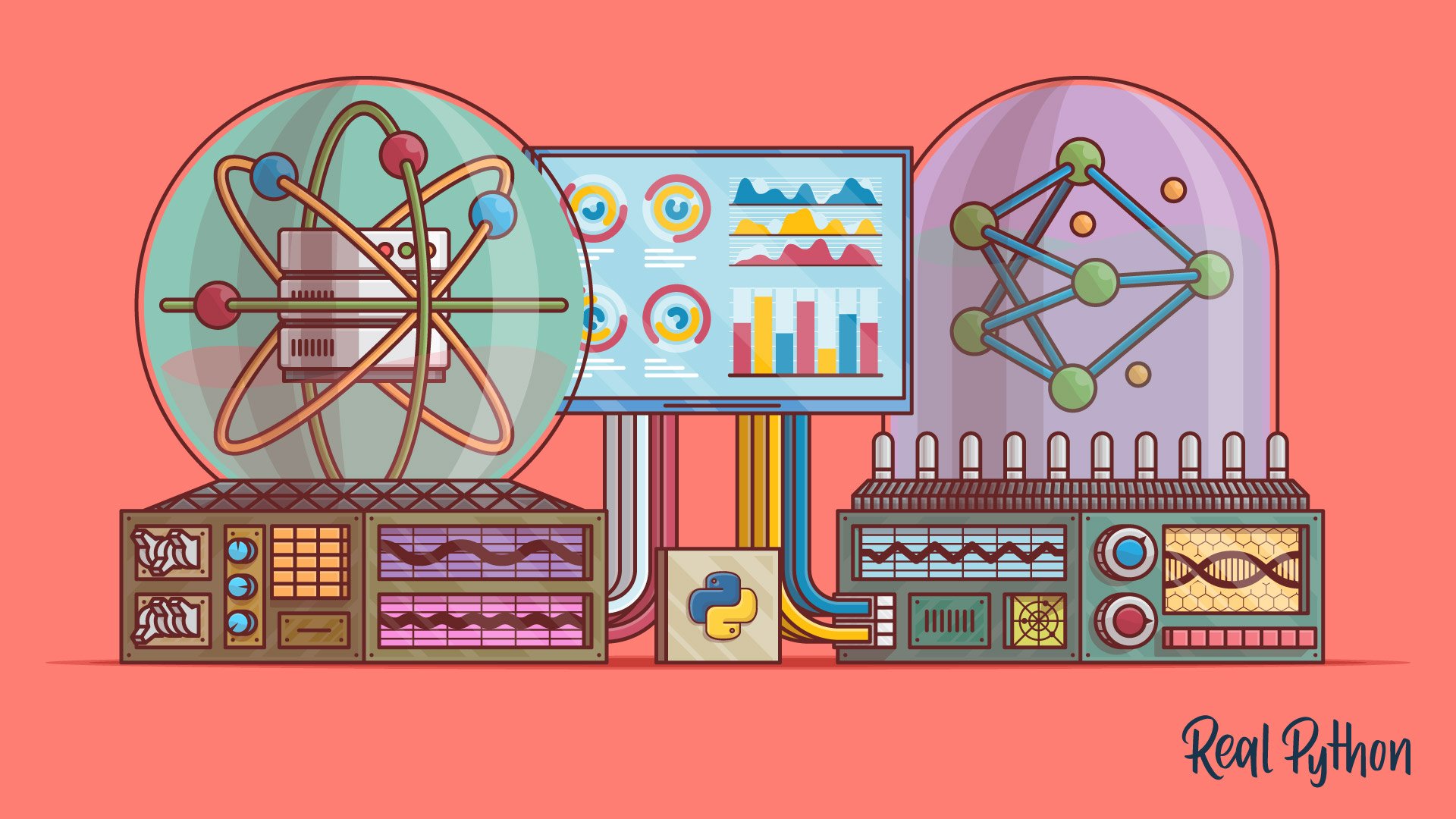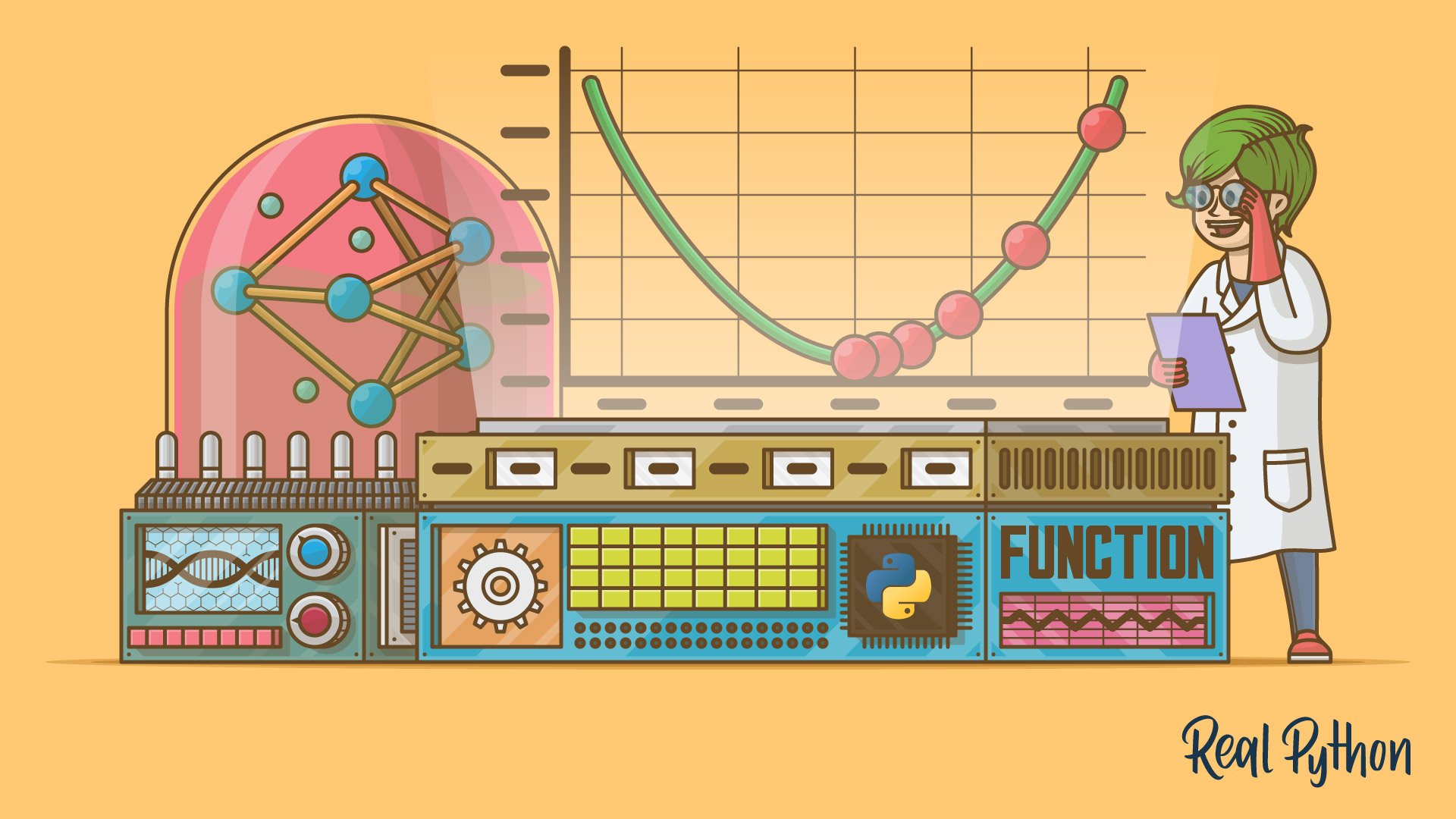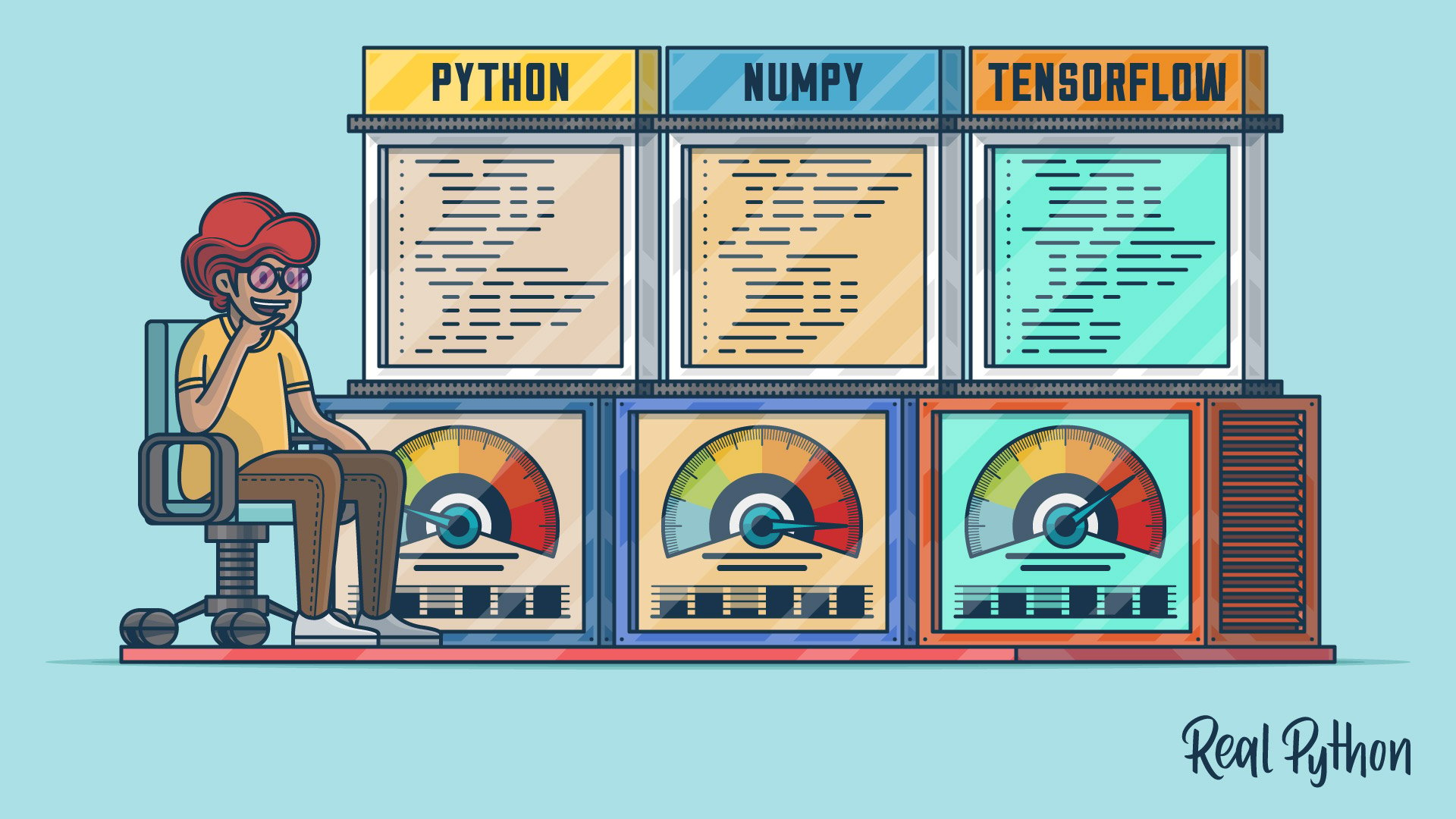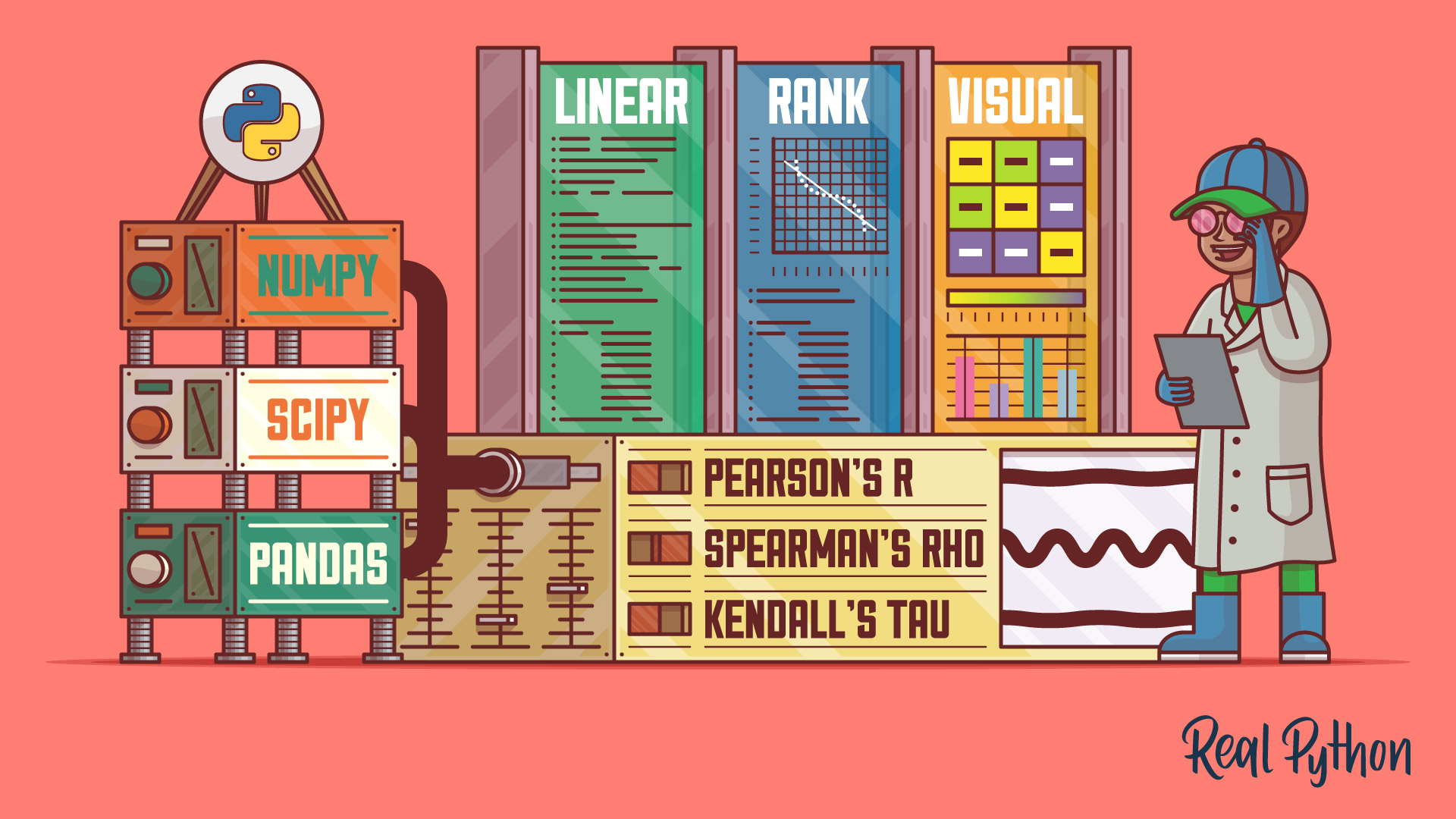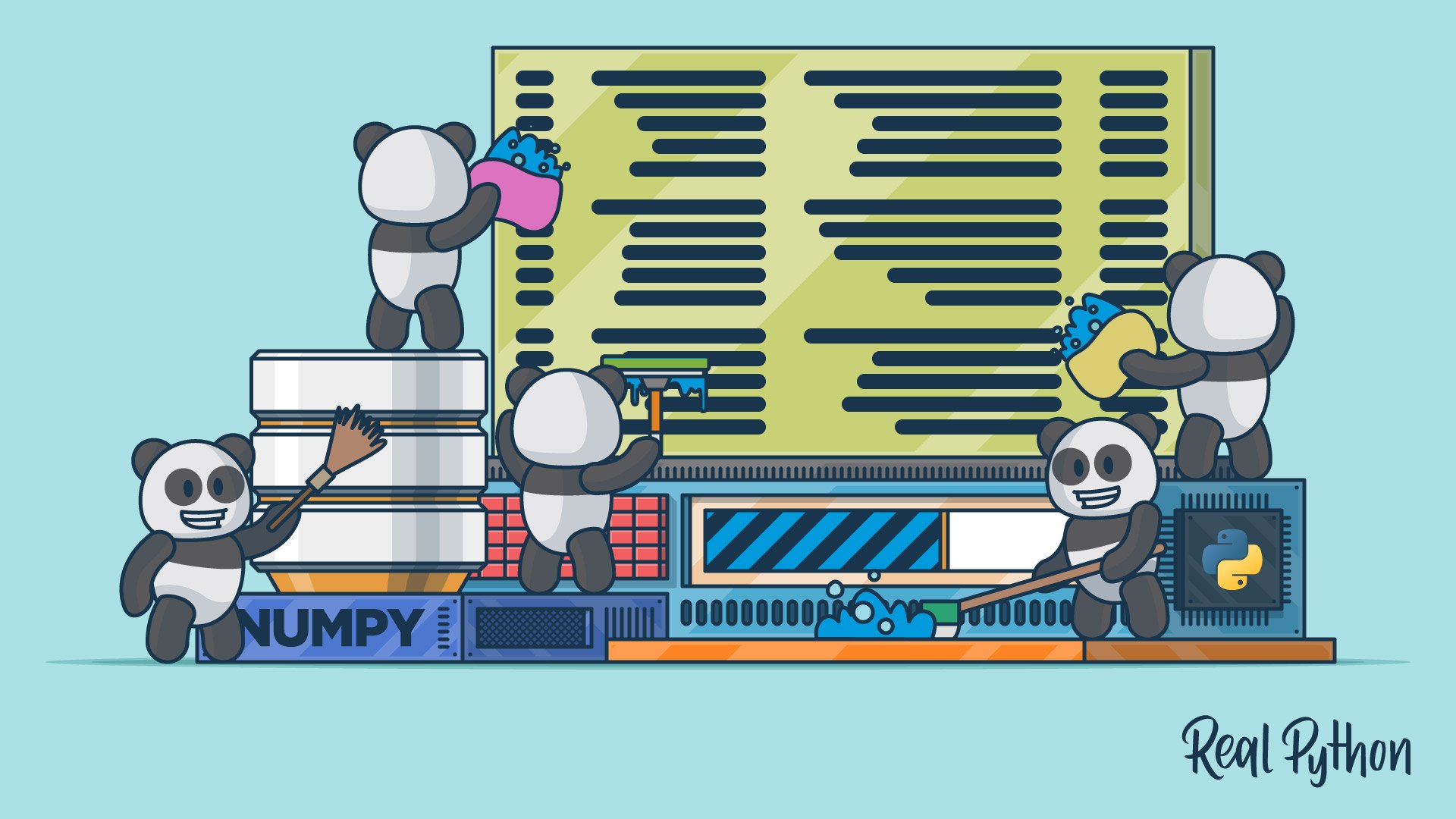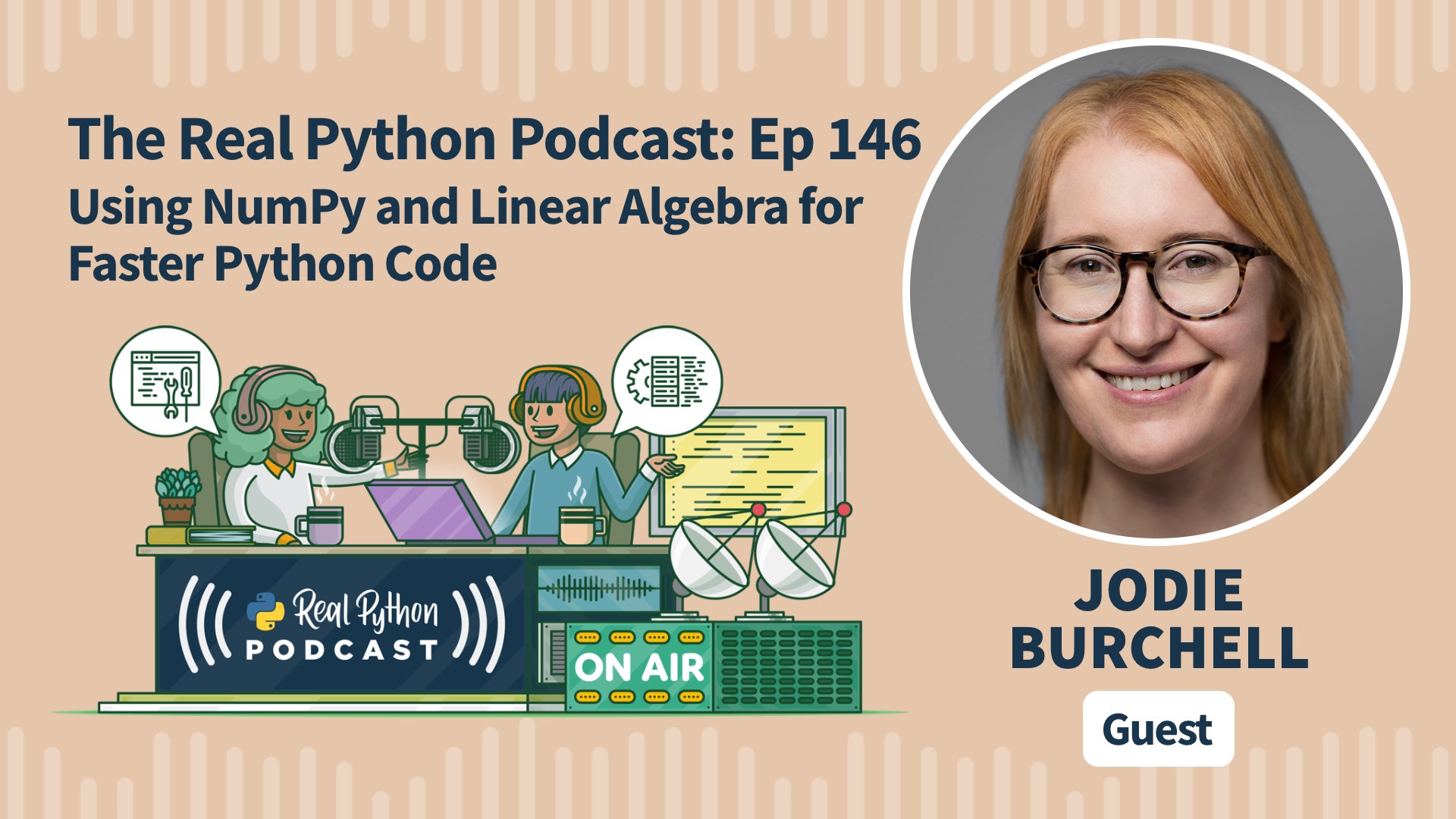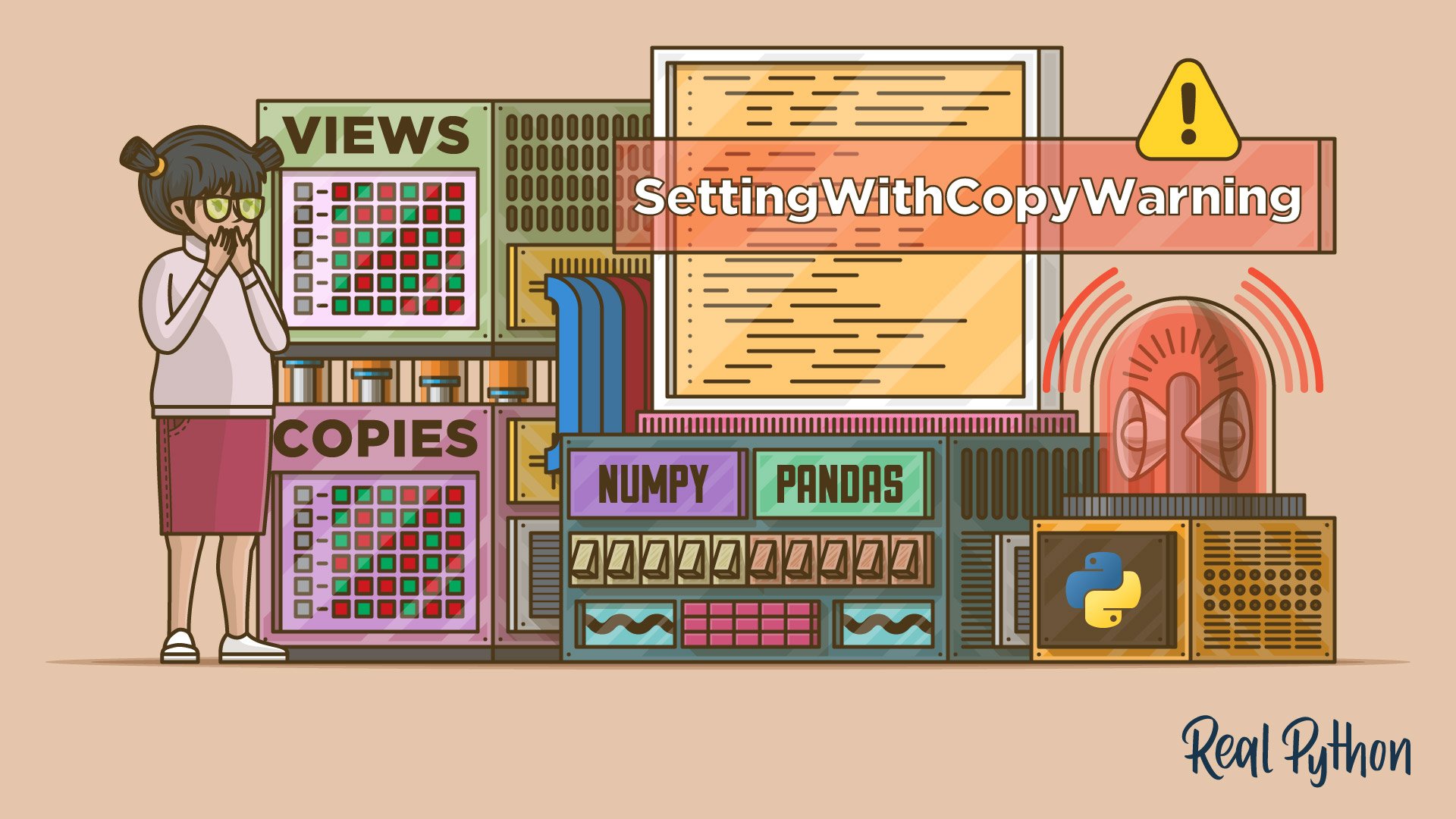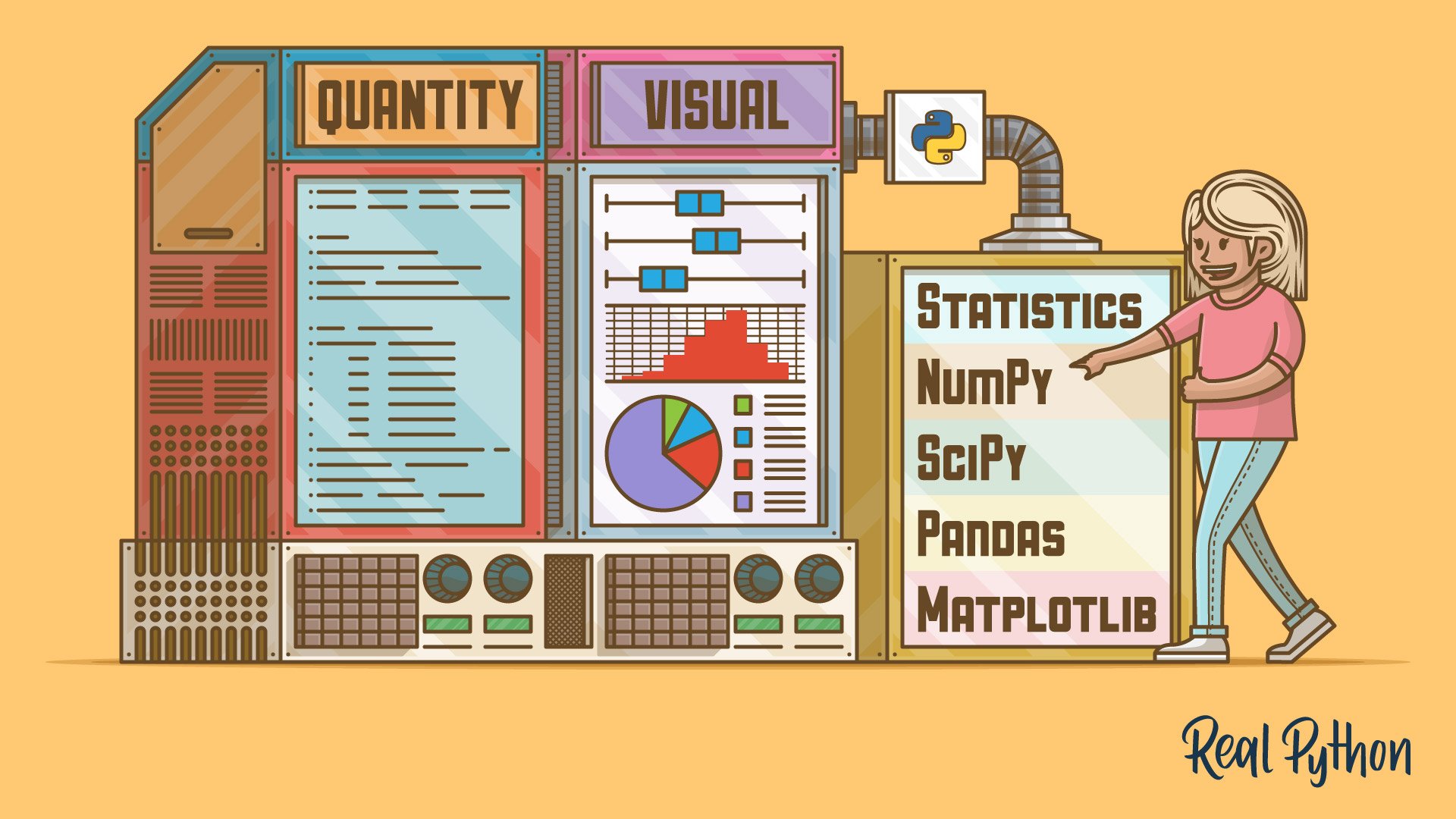NumPy Tutorial: Your First Steps Into Data Science in Python
Jan 11, 2021 basicsdata-sciencenumpy
In this tutorial, you'll learn everything you need to know to get up and running with NumPy, Python's de facto standard for multidimensional data arrays. NumPy is the foundation for most data science in Python, so if you're interested in that field, then this is a great place to start.
NumPy's max() and maximum(): Find Extreme Values in Arrays
Jan 18, 2025 basicsdata-sciencenumpy
In this introduction to NumPy, you'll learn how to find extreme values using the max() and maximum() functions. This includes finding the maximum element in an array or along a given axis of an array, as well as comparing two arrays to find the larger element in each index position.
Using the NumPy Random Number Generator
Jun 05, 2023 intermediatedata-sciencenumpypython
In this tutorial, you'll take a look at the powerful random number capabilities of the NumPy random number generator. You'll learn how to work with both individual numbers and NumPy arrays, as well as how to sample from a statistical distribution.
Look Ma, No for Loops: Array Programming With NumPy
Apr 10, 2018 intermediatedata-sciencenumpy
How to take advantage of vectorization and broadcasting so you can use NumPy to its full capacity. In this tutorial you'll see step-by-step how these advanced features in NumPy help you writer faster code.
NumPy Practical Examples: Useful Techniques
Nov 20, 2024 intermediatenumpypython
In this tutorial, you'll learn how to use NumPy by exploring several interesting examples. You'll read data from a file into an array and analyze structured arrays to perform a reconciliation. You'll also learn how to quickly chart an analysis and turn a custom function into a vectorized function.
Using NumPy reshape() to Change the Shape of an Array
Feb 27, 2023 intermediatedata-structuresnumpy
In this tutorial, you'll learn how to use NumPy reshape() to rearrange the data in an array. You'll learn to increase and decrease the number of dimensions and to configure the data in the new array to suit your requirements.
NumPy arange(): How to Use np.arange()
Jul 22, 2019 intermediatedata-sciencenumpy
In this step-by-step tutorial, you'll learn how to use the NumPy arange() function, which is one of the routines for array creation based on numerical ranges. np.arange() returns arrays with evenly spaced values.
How to Get Normally Distributed Random Numbers With NumPy
Apr 19, 2023 intermediatenumpy
In this tutorial, you'll learn how you can use NumPy to generate normally distributed random numbers. The normal distribution is one of the most important probability distributions. With NumPy and Matplotlib, you can both draw from the distribution and visualize your samples.
Stochastic Gradient Descent Algorithm With Python and NumPy
Jan 27, 2021 advancedmachine-learningnumpy
In this tutorial, you'll learn what the stochastic gradient descent algorithm is, how it works, and how to implement it with Python and NumPy.
Pure Python vs NumPy vs TensorFlow Performance Comparison
May 07, 2018 advanceddata-sciencemachine-learningnumpy
A performance comparison between pure Python, NumPy, and TensorFlow using a simple linear regression algorithm.
NumPy, SciPy, and pandas: Correlation With Python
Dec 23, 2019 intermediatedata-sciencenumpy
In this tutorial, you'll learn what correlation is and how you can calculate it with Python. You'll use SciPy, NumPy, and pandas correlation methods to calculate three different correlation coefficients. You'll also see how to visualize data, regression lines, and correlation matrices with Matplotlib.
How to Use Conditional Expressions With NumPy where()
Sep 11, 2024 intermediatedata-sciencenumpy
This tutorial teaches you how to use the where() function to select elements from your NumPy arrays based on a condition. You'll learn how to perform various operations on those elements and even replace them with elements from a separate array or arrays.
Course: Using NumPy's np.arange() Effectively
Mar 24, 2020 intermediatedata-sciencenumpy
In this step-by-step course, you'll learn how to use the NumPy arange() function, which is one of the routines for array creation based on numerical ranges. np.arange() returns arrays with evenly spaced values
Quiz: NumPy Practical Examples: Useful Techniques
Nov 20, 2024 intermediatenumpypython
This quiz will test your understanding of working with NumPy arrays. You won't find all the answers in the tutorial, so you'll need to do some extra investigating. By finding all the answers, you're sure to learn some interesting things along the way.
Course: NumPy Techniques and Practical Examples
Feb 04, 2025 intermediatenumpypython
In this video course, you'll learn how to use NumPy by exploring several interesting examples. You'll read data from a file into an array and analyze structured arrays to perform a reconciliation. You'll also learn how to quickly chart an analysis and turn a custom function into a vectorized function.
Pythonic Data Cleaning With pandas and NumPy
Mar 26, 2018 intermediatedata-sciencenumpy
A tutorial to get you started with basic data cleaning techniques in Python using pandas and NumPy.
The Real Python Podcast – Episode #146: Using NumPy and Linear Algebra for Faster Python Code
Feb 24, 2023
Are you still using loops and lists to process your data in Python? Have you heard of a Python library with optimized data structures and built-in operations that can speed up your data science code? This week on the show, Jodie Burchell, developer…
Course: Data Cleaning With pandas and NumPy
May 31, 2022 intermediatedata-sciencenumpy
In this video course, you'll learn how to clean up messy data using pandas and NumPy. You'll become equipped to deal with a range of problems, such as missing values, inconsistent formatting, malformed records, and nonsensical outliers.
SettingWithCopyWarning in pandas: Views vs Copies
Jun 10, 2020 advanceddata-sciencenumpy
In this tutorial, you'll learn about views and copies in NumPy and pandas. You'll see why the SettingWithCopyWarning occurs in pandas and how to properly write code that avoids it.
Python Statistics Fundamentals: How to Describe Your Data
Dec 16, 2019 intermediatedata-sciencenumpy
In this step-by-step tutorial, you'll learn the fundamentals of descriptive statistics and how to calculate them in Python. You'll find out how to describe, summarize, and represent your data visually using NumPy, SciPy, pandas, Matplotlib, and the built-in Python statistics library.
